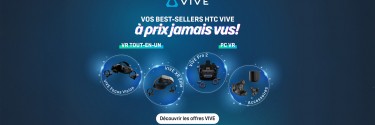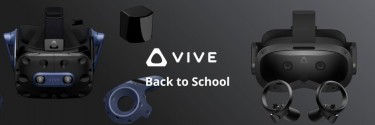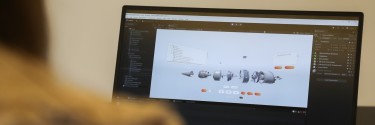Varjo Teleport, making 3D scanning accessible to all

Varjo has launched Varjo Teleport, its new application that makes it easy to produce a detailed 3D scan of an environment using a simple Iphone or Ipad.
Thanks to this application, any workspace can be transformed into an immersive experience.
Immersion had the opportunity to test Teleport ahead of its launch, and to scan its showroom. Find out more in this article.
Varjo's simplified digitization
Varjo, the Finnish manufacturer of virtual reality headsets, has launched a new application called Varjo Teleport.
Varjo Teleport is an innovative service that makes it easy to transform real places into immersive virtual experiences. Simply using an iPhone, users can scan an environment in a matter of minutes, without the need for specialized equipment or extensive training.
These images are then uploaded securely to the cloud via the AWS service, where they enable the reconstruction of an immersive environment thanks to a blend of reconstruction techno and AI.
This method eliminates the need for complex manual processing and enables spaces to be recreated with striking realism, including lighting, shadows and reflections.
The technique used to reconstruct the environment is called Gaussian Splatting, an AI-based technology.
At Immersion, we had the opportunity to test Teleport ahead of its launch.
Our playground? Our showroom.
What is Gaussian Splatting?
Gaussian Splatting is an innovative method for recreating 3D scenes with striking realism, incorporating natural lighting, precise shadows, high-fidelity textures and reflections. The technique is based on the capture of a few photos or videos taken from different angles, transformed into high-quality images.
The process begins with the generation of a point cloud representing the scene. Each point is then converted into a “Gaussian task”: an ellipse whose colors gradually fade from the center to the edges, following a Gaussian curve. Thanks to machine learning algorithms, the parameters of these spots (size, color, opacity, etc.) are optimized to render the scene with remarkable quality and precision.
With solutions like Varjo Teleport, this complex processing is carried out entirely in the cloud. Once the scene has been reconstructed, the environment can be explored directly via a browser, or in total immersion using a virtual reality (VR) or mixed reality (XR) headset. This approach is changing the way spaces and environments can be captured, visualized and shared.
The advantages and limitations of Gaussian Splatting
Our expert explains the advantages and limitations of Gaussian splatting.
Advantages:
Gaussian Splatting has several advantages over other 3D modeling techniques, such as photogrammetry or Neural Radiance Fields (NeRF).
Firstly, it requires fewer computational resources, making it usable with less powerful hardware, while enabling a greater number of images to be processed. This makes it ideal for real-time applications and realistic VR scenes.
Gaussian tasks" feature a transparency parameter, enabling materials with variable opacity to be reproduced with precision.
It also offers excellent distance perception, enhancing realism and scene immersion.
Limitations:
However, this technique still has certain limitations, notably the appearance of artefacts, blurring or ghosting, which become particularly noticeable when you move away from the initial shooting positions.
What's more, interactivity remains very limited. Unlike photogrammetry or NeRF, Gaussian Splatting does not generate 3D meshes or individual objects. This limits the possibilities for manipulating elements in the environment, such as moving, enlarging or otherwise interacting with them.
That said, Gaussian Splatting is a constantly evolving technique, and these limitations, particularly in terms of interactivity, are gradually being resolved. It is therefore likely that this problem will disappear in the future.
What's in it for digital twins?
"Thanks to Teleport, creating digital twins has never been so easy or so high quality. By combining this technology with our Shariiing XR solution, we offer an immersive, collaborative experience that redefines the way virtual environments are shared and explored." Julien Castet, Director of Innovation and Research at Immersion.
For digital twins, the interest will be :
◼ Rapid generation: near-instantaneous representations, crucial for constantly changing environments
◼ Application flexibility: integrate data in real time, while optimizing resources
◼ Visual quality: highly realistic rendering, essential for uses such as predictive maintenance or immersive training.
Gaussian Splatting will make it easier to deploy and update digital twins, especially in complex environments such as factories or urban infrastructures.
Conclusion:
Varjo Teleport makes 3D scanning not only accessible, but also intuitive. Thanks to technologies such as Gaussian Splatting, this process once reserved for experts or requiring complex equipment is now within everyone's reach, with just a smartphone.
By testing this innovation in our showroom, we were able to see how it transforms physical spaces into immersive virtual experiences. Varjo Teleport paves the way for a new era in modeling and sharing environments.
So imagine the opportunities: what if you could capture the world around you and reinvent it in the blink of an eye? The future of virtual reality starts here.




0 comment(s)